We all want to get as good at climbing as quickly as possible. In my 6 years of climbing, I have learned what actually works to improve climbing and what doesn’t. I wrote this article to help all of you beginner climbers out there to progress to intermediate as fast as possible.
On average, the fastest way to go from a beginner to an intermediate climber is to climb three times per week, plan out your training sessions, and frequently learn new climbing skills. Focusing on improving your weaknesses in the sessions will allow you to progress faster.
There are certain ways to maximize your progress and keep you from becoming derailed in your climbing journey. Doing it wrong and getting injured will not only hurt but it will delay your climbing progress. In this article I discuss the absolute best way to become an intermediate climber as quickly and safely as possible.
If you are interested in seeing what the current prices are for the most popular rock climbing training aids, you can find them on Amazon by clicking here. Using the Amazon affiliate link above and/or other links in the article helps support this website.
Rapidly Progress To Be An Intermediate Climber
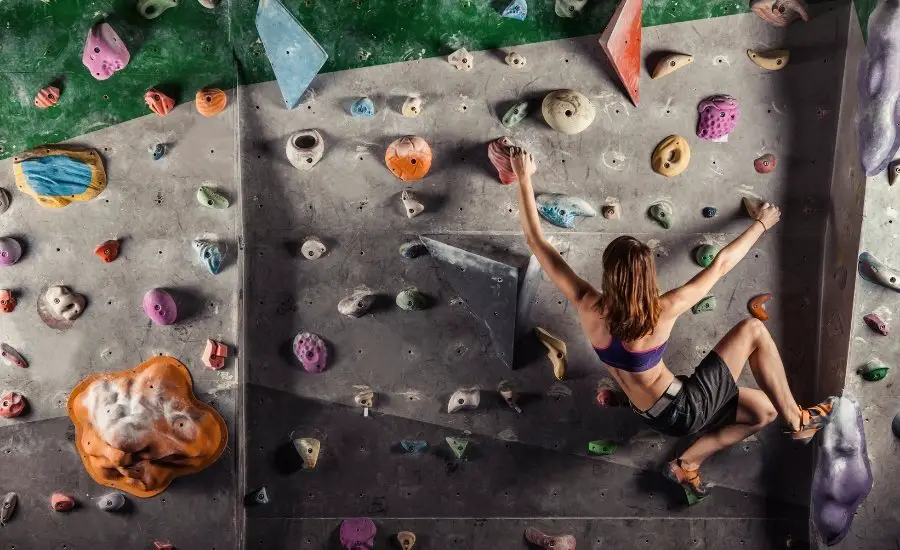
Before we get too deep into this, we need to define what it means to be a beginner and an intermediate climber. I wrote an article on each which dives into the intricacies and criteria each “level” must meet.
I recommend taking a brief look at them just to make sure we are on the same page before reading any further. You can see what it means to be a beginner climber here and what it means to be an intermediate here.
Now that we are on the same page, let’s get into it.
The fastest way for beginners to become intermediates is to increase their climbing ability, experience, and knowledge as quickly as possible. As discussed in the articles I linked above, being an intermediate climber requires more than just climbing performance alone.
In the remainder of this article, I will discuss the quickest way to level up from beginner to intermediate in each of the three main categories.
Improve Climbing Ability
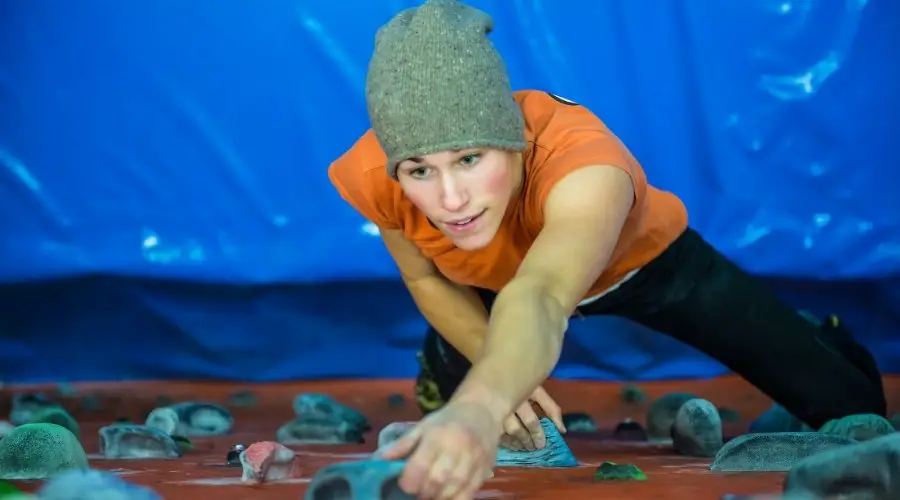
The best and fastest way for beginners to improve climbing ability is to climb more and strategically plan their sessions. While some non-climbing specific training may help, the majority of your progress will come through actually climbing.
I discuss how many times you should plan to climb in the following section. This section focuses mainly on what to do to get the most out of your climbing.
Plan Your Gym Sessions
Having an actual plan for your climbing gym sessions is key to improving as quick as possible. Too often climbers just go into the gym without a plan and just climb around. While this is a very fun way to spend a gym session, it will not allow you to progress as fast as possible.
Each session should have a purpose. I recommend that beginners focus on either bouldering or top roping for the majority of a gym session and change this focus for the next session. To check out the best way to structure your gym sessions, check out my article linked here. I go into great detail on how to actually plan your session to get the most out of it.
By doing this, you will be motivated to achieve your goals and have something to work on every time. In addition to this, it becomes easier to track your progress from one session to the next. Progressively climbing harder and harder will eventually stack up to allow you to climb routes a month from now that you couldn’t even start today.
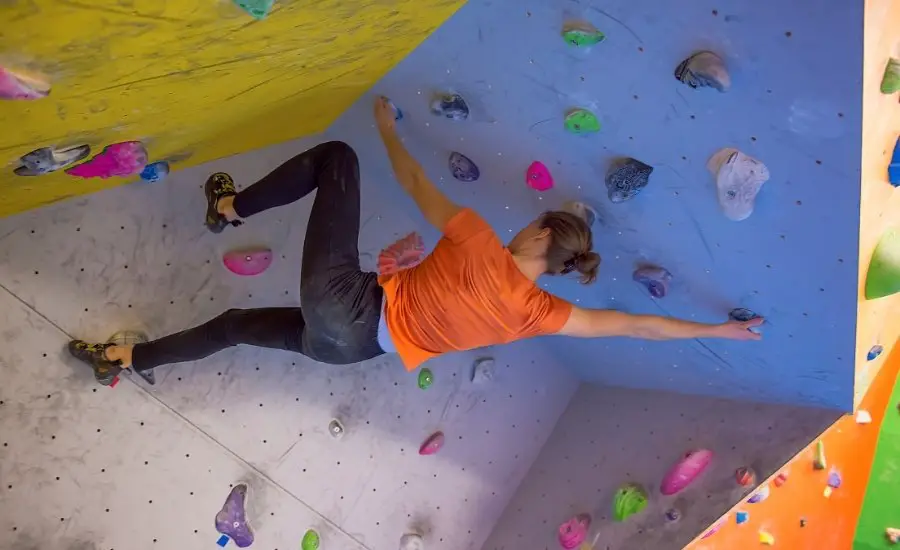
Work on Your Weaknesses
This is huge. All of the best climbers know what they are weak at and have continuously tried to work on that. The first step to do this is to be brutally honest with yourself and identify what you currently suck at.
This will be different for everyone. Some of you may be really good at static climbing and top roping. Others of you may be really good at dynamic movements and bouldering. The key is to identify what needs work and to focus on that.
For you short climbers out there, it may seem like the odds are stacked against you. All of your taller climber friends are able to reach holds that are impossibly high for you. To help y’all out, I put together a list of 12 climbing tips which will provide you with some guidance on what you can practice to make up for your shorter stature.
Start to Incorporate Training Exercises
While these are not necessary to improve your climbing ability, they can help out a little bit. Beginner climbers typically lack the base fitness needed for high level climbing.
I am NOT recommending that beginners start hangboarding and trying to campus. These are more dangerous than helpful at their current level. To know why exactly this is, check out my article discussing the effects of hangboarding on beginners here.

Instead to help develop this fitness and strength, I recommend beginners do light cardio and simple core exercises. Examples of cardio can include walking, running, cycling, or swimming.
Doing a short core workout (sit-ups, planks, leg raisers, etc.) after a session will also help tremendously with climbing. People don’t typically realize how heavily climbing relies upon core strength. Every single climbing move stems from the core.
All this being said, there is no need for beginners to excessively cross-train. The majority of their progress will come from actually climbing.
Get More Climbing Experience
Beginners typically do not have the best climbing technique, body position, or footwork. All three of these are integral to climb harder grades. Not everything relies on strength alone. The only way to improve these areas is to actually climb more.
Increase Climbing Frequency

By increasing how often you climb, you will dramatically cut down on how long it will take to get better. For example, if Climber A climbs once a week and Climber B climbs 3 times a week, Climber B can accomplish in 4 months what it takes Climber A a year to do.
It is important no to overdue it however. As a beginner your body is not currently used to climbing very often. Going too often right now at your level can be dangerous and result in overtraining.
Overtraining will not only make climbing less fun but it will also hinder your progress and potentially lead to injuries. Your muscles need time to recover.
Going two to three times per week will allow your body to recover and keep your climbing sessions fun and engaging.
Try Different Types of Climbing
Climbing is more than just bouldering. To be an intermediate climber, you should be well experienced in bouldering, top roping, and sport climbing. By practicing all three of these, you will start to gain very valuable climbing experience which will transfer over into your overall climbing ability and knowledge.
Get Out of the Climbing Gym
While indoor climbing is super convenient, to become an intermediate climber you should be confident with climbing outside. I recommend making friends with climbers at your local gym. This will give you more opportunities to either be invited or organize a climbing outing yourself.
Here is a super helpful list of the 21 items you should plan to bring on your outdoor bouldering trip!
Increase Your Climbing Knowledge
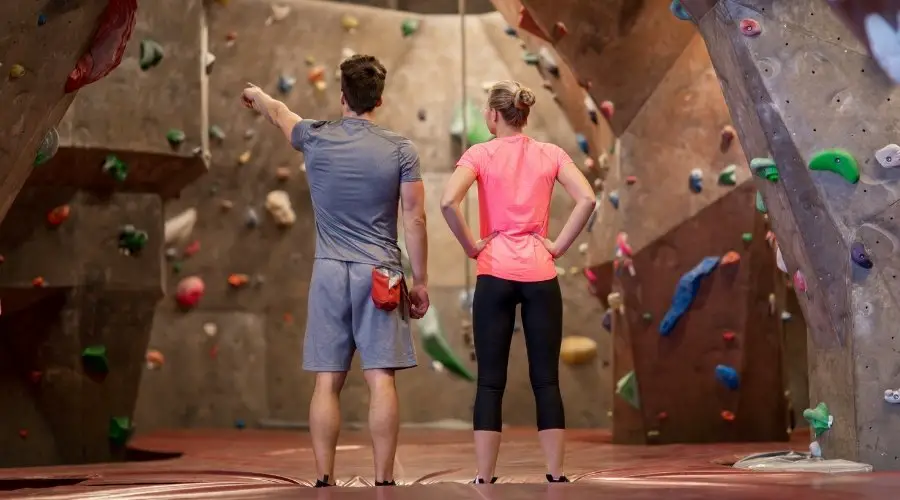
The last aspect you will need to improve to become an intermediate is your climbing knowledge. While this typically will increase with experience, there are ways to speed this process up.
Learn How to Belay
Every intermediate climber should know how to belay and the terminology that comes along with it. Belaying is integral to go top roping and sport climbing outdoors.
Most climbing gyms offer belay classes for free that you can attend. If you have not already done so, I highly recommend you take one of these free ones. Getting taught by an actual belay instructor will be a lot better and safer than having some random climber show you how.
(Plus, no one wants a climbing partner that can’t belay them)
Learn How to Clip
As you may have guessed, I think climbers need to know how to sport climb and clip to actually be considered intermediates.
While I don’t think you need to be able to sport climb your first day in the climbing gym, I do think it is worthwhile to learn as you progress. Being able to properly clip will save you a lot of time and energy when on the route.
I realize that the logistics of sport climbing can sometimes get a bit challenging. That is why I put together a guide that tells you how to practice clipping and gives 3 ways to do it at home.
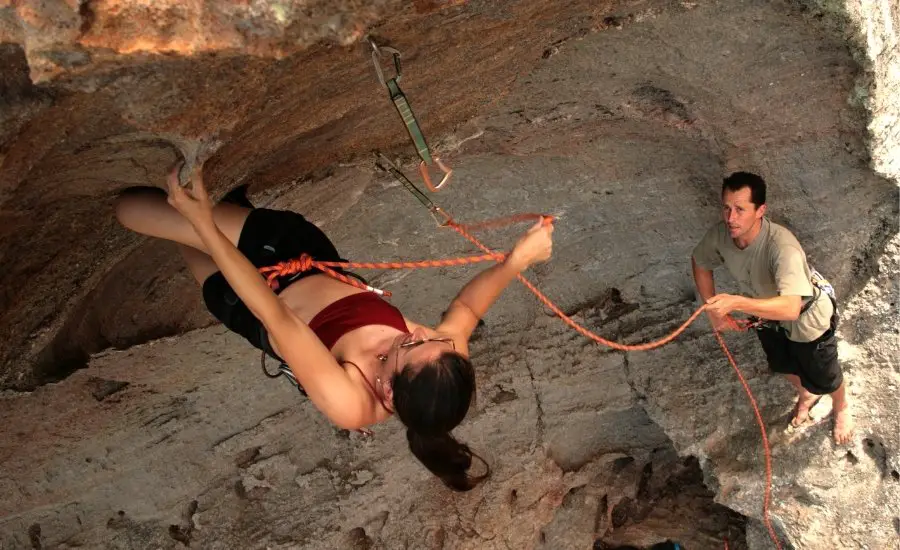
Watch Climbing Videos and Listen to Podcasts
The quickest way to increase climbing knowledge is to consume tremendous amounts of content. If you are anything like me, this is the easy part. Climbing has kept me interested and I have been constantly learning more and more over the past 6 years.
I put together a very helpful article that summarizes my favorite resources to increase your climbing knowledge. It covers everything from my favorite climbing YouTube channels and podcasts.
Learning everything you can about the sport will help you climb harder. You will find different techniques, learn about gear, pick up new skills, and become a more well-rounded climber.
